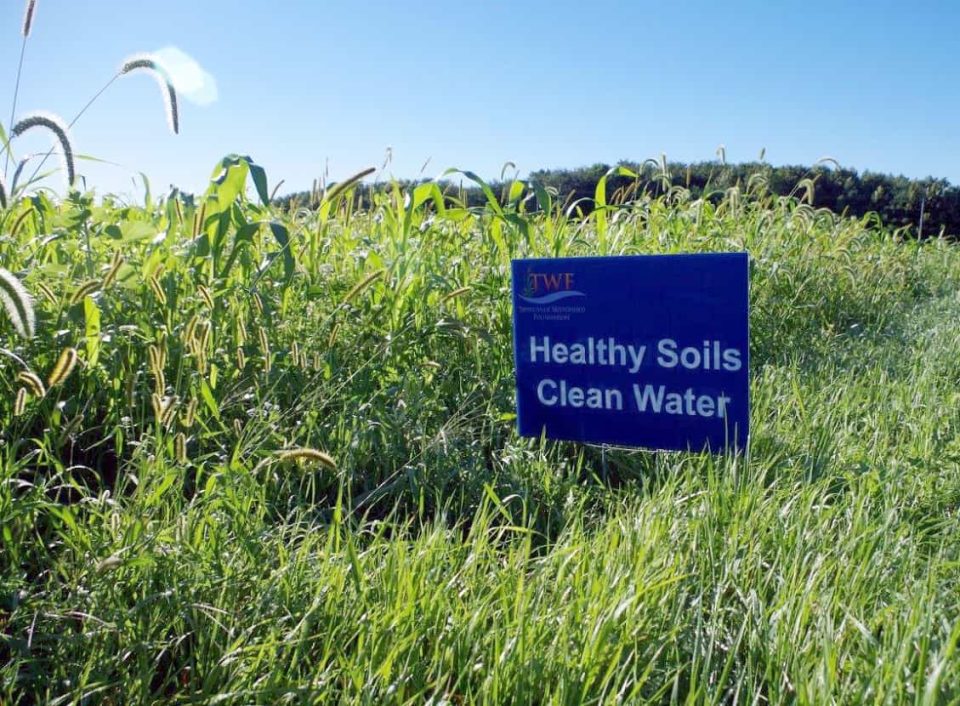 The Connection Between Soil and Clean Water
The Connection Between Soil and Clean Water
Creating and maintaining healthier waters begins by managing the amount of pollution entering the water in the first place. Pollution comes in many forms including human waste, animal waste, lawn fertilizers, agricultural runoff, and soil erosion. Soil and water are interconnected. Both are vital to our environment. Conserving and protecting them is one of our most important responsibilities.
Don’t Farm Naked: Plant Cover Crops
The Watershed Foundation’s Soil Health Initiative provides assistance to farmers for a package of conservation practices that include no-till farming, precision nutrient application, and pest management, grassed watershed, buffers, and cover crops. In short, these practices minimize soil disturbance which increases water holding capacity and, in turn, reduces runoff that pollutes water bodies. Keeping the ground covered with vegetation also reduces runoff and erosion, as well as reducing flooding that pollutes water bodies. Maximizing diversity in the soil further builds healthy soil that is more apt to filter and degrade pollutants before entering water sources.
Hold Onto Your Roots
Healthier soil recycles essential nutrients benefitting food production and the food cycle. However, healthy soil also plays an important role in the water cycle. According to www.Indiana.ClearChoicesCleanWater.org when vegetation with deep roots grows in the soil for as long as possible each year, it becomes healthier! Thus, root channels are sustained and help direct rainwater deep into the ground. Properly channeled rainwater replenishes underground aquifers which many residents, industries, and utilities use. Healthy soil absorbs and retains more water than unhealthy soil while releasing fewer pollutants, further protecting the water.